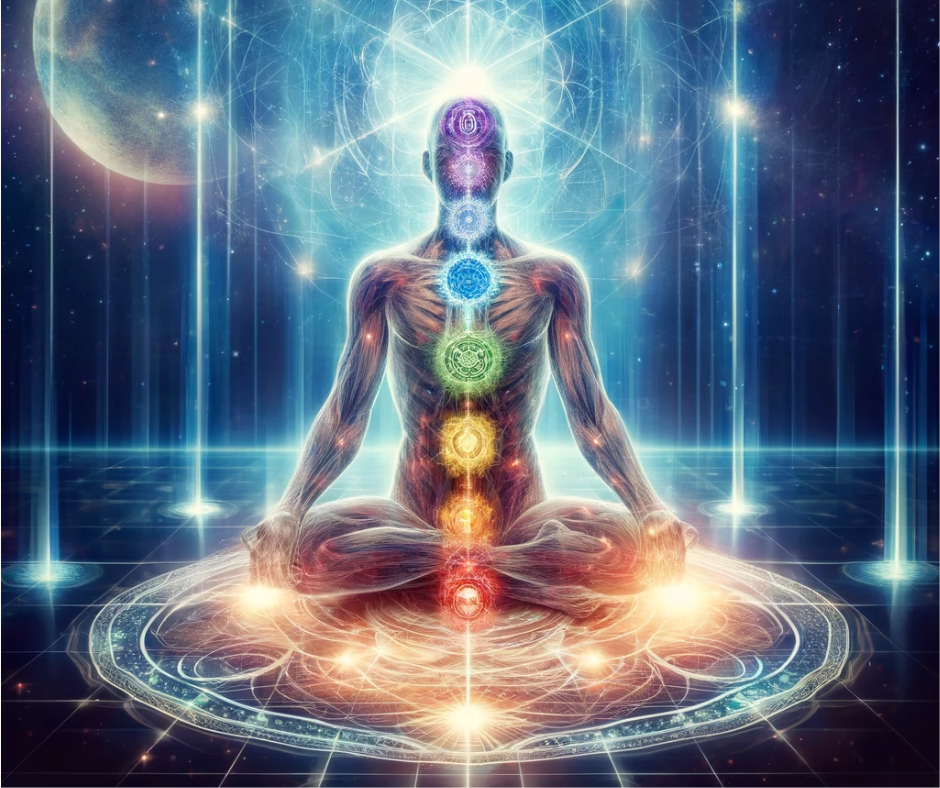
What is a Shamanic Illumination Ceremony?
Imagine having the emotional weight of your past lifted from your soul—not through years of therapy, but in a single, sacred session that taps into ancient wisdom and energetic healing. That’s the promise of the shamanic illumination ceremony. This powerful spiritual practice draws from indigenous shamanic traditions, particularly those from the Andes and Amazon, and offers a deeply transformative experience for those suffering from emotional wounds, trauma, or chronic life struggles.
The illumination ceremony is not just a ritual; it’s an energetic intervention. The idea is simple but profound: our past traumas leave imprints—energetic scars—on our luminous energy field (LEF), which then influence how we think, feel, and act. These imprints can keep us stuck in patterns of fear, pain, or self-sabotage. The ceremony aims to find these imprints and burn them away with light (hence, “illumination”), allowing your energy system to recalibrate and restore its natural state of harmony.
Whether you’re dealing with childhood wounds, PTSD, a painful breakup, or even unexplained sadness, this ceremony addresses the root cause—on a spiritual and energetic level—rather than just managing the symptoms. It’s a direct dialogue with your soul.
So, how does it all work? Let’s break it down from its roots and uncover how this ancient practice might just be the key to your emotional liberation.
Understanding Shamanism and Energy Healing
At the core of a shamanic illumination ceremony is the ancient spiritual practice of shamanism. This is not a religion, but a way of connecting with nature, spirit, and energy. Shamans believe everything is energy, and that trauma or illness begins as an energetic disturbance long before it becomes a physical or emotional issue.
Energy healing is the foundation. Unlike modern Western medicine, which focuses on treating symptoms, shamanic healing gets to the root. It’s about removing negative energy, restoring balance, and realigning the soul with its natural vibration.
In this world, your body is more than flesh and bones—it’s a dynamic energy system. Trauma, fear, and grief get stored in this system, especially in the chakras and the LEF. Over time, these stuck energies form dense, dark imprints. These aren’t visible to the naked eye, but a trained shaman can sense them—and more importantly, shift them.
Think of your energy field like a garden. If it’s full of weeds (trauma), no matter how much you water it (therapy, self-help books, etc.), the flowers can’t grow. The illumination ceremony is like spiritually weeding the garden so healing can take root.
Origins and History of the Illumination Ceremony
The illumination process originates from the traditions of the Q’ero shamans of the Andes, descendants of the Inca civilisation. These wisdom-keepers have passed down the ritual for thousands of years, keeping the practice sacred and authentic.
The ceremony itself was preserved in secrecy until recent decades, when shamans began sharing their teachings with the Western world, not as a commercialisation of their culture, but as a response to a collective soul sickness they saw in modern society. Depression, addiction, anxiety, trauma—these were symptoms of a spiritual crisis.
Today, the illumination process is used by trained energy healers and modern-day shamans across the globe. Though rooted in ancient practice, it’s highly relevant in today’s world. People from all walks of life—therapists, CEOs, artists, veterans—are turning to this ritual for deep emotional healing.
But don’t mistake it for a trend. Unlike a quick fix or superficial experience, illumination is about permanent transformation. It’s a path, not a pill.
How the Ceremony Works: A Spiritual Detox
The illumination ceremony is like an energetic surgery. It typically begins with the practitioner entering an altered state, through breathwork, drumming, or chanting, to connect with higher consciousness and your energy field. Then, using their hands and intention, they scan your LEF to locate energetic imprints that stem from trauma.
Once found, the practitioner “extracts” the heavy energy, often through a process called decoupling, and then infuses the affected chakra with pure light. This light isn’t literal—it’s spiritual energy that re-patterns your entire vibration.
Just as toxins in the body need to be flushed, your soul’s toxins are cleared in this ceremony. You might cry, shake, laugh, or feel a rush of emotion—this is part of the release. And when the energy block is gone, you’ll feel lighter, clearer, and more yourself.
This is why people often describe the experience as life-changing. It’s like someone lifted a burden you didn’t even know you were carrying.
Sacred Space and Ritual Preparation
Before any real healing can begin, a sacred space must be created. This isn’t just about burning some sage and lighting candles—although that can be part of it. Creating sacred space means building an energetic container of safety, intention, and reverence. It’s where spirit meets matter and healing can unfold without interference from outside energies or inner resistance.
The shaman may begin by calling in the four directions—North, South, East, and West—as well as Earth and Sky, invoking the spirit allies, animal totems, and archetypes that will guide and protect the work. You may hear them speak in Quechua or another indigenous language. It’s not just ritual—it’s alignment.
For the participant, this is also the time to set a clear intention. Why are you here? What are you ready to release? The ceremony responds to your clarity and readiness. If you’re just curious, you may get a mild shift. But if you’re ready to surrender the pain, you’ll feel the shift in your bones.
Everything in the ceremony is symbolic—flowers, stones, feathers, and sacred smoke. Each item is a carrier of energy, used to amplify your intention and guide the process. You’re not just in a room. You’re in a portal between worlds, where deep soul work takes place.
When you’re in this kind of environment, you automatically drop into a more receptive state. Your nervous system relaxes, your heart opens, and your spirit becomes more available to healing. That’s the power of sacred space—it prepares you for transformation at every level.
The Role of the Shaman in the Healing Process
Let’s talk about the one guiding this whole journey: the shaman. In the Western world, we sometimes romanticise shamans as mystical figures draped in feathers and beads, whispering ancient secrets. But in truth, a shaman is simply a bridge—a mediator between the physical world and the spirit realm.
Their role in the illumination ceremony is both intuitive and skill-based. They don’t diagnose in the clinical sense; they sense. They work with your energy field, interpreting the language of your soul, and use techniques handed down through generations to remove what no longer serves you.
The shaman is also your protector in this space. As they enter altered states to work on your energetic body, they are acutely aware of your safety, energetic boundaries, and spiritual needs. They may use rattles, feathers, breath, or chanting—not as theater, but as tools that activate the energy needed for your specific healing.
One powerful aspect of their role is their ability to see your trauma without judgment. They don’t need your whole story. Trauma to them is not a label or diagnosis—it’s heavy energy that needs to be cleared. This non-verbal, energetic approach allows for deep healing, especially when words aren’t enough or feel too painful.
They also help integrate the healing. A good shaman doesn’t just clear the trauma and send you off—they guide you through what’s coming next. Emotional releases, dreams, visions, or even physical shifts can happen after the session, and the shaman can help you navigate these with wisdom and grace.
Use of Breath, Sound, and Visualisation
A shamanic illumination ceremony isn’t something you passively receive. It’s a full-bodied, multi-sensory experience—and you’re very much a participant. Three of the most essential elements used in the ceremony are breath, sound, and visualisation. Each plays a unique role in unlocking, moving, and releasing energy.
Breath is your direct line to life force. Conscious breathing activates your parasympathetic nervous system, slows down your brain waves, and helps you drop into a state of inner awareness. It also oxygenates your body, which is crucial during moments of emotional release or energy shifts. The shaman may guide you through specific breathing patterns to stimulate certain chakras or loosen stuck energy.
Sound is another portal. Whether it’s the steady rhythm of a drum, the jingle of a rattle, or sacred chants, sound helps bypass your analytical mind and go straight to the soul. Think of sound as a broom sweeping through your energy field, shaking up the density, and making space for light to enter. Certain frequencies are known to harmonise the brain and energy centres, supporting the healing process on a cellular level.
Visualisation helps rewire your subconscious. During the ceremony, you may be guided to envision your trauma as a shape, colour, or object. You might be asked to imagine light entering your body or to see your inner child being embraced by love. These aren’t just make-believe exercises. Visualisation creates new neural pathways and energetic blueprints for your reality. You’re not just thinking it—you’re feeling it, embodying it, and manifesting it into your energy field.
These tools—breath, sound, and vision—combine to create a symphony of healing that reaches beyond the limits of the rational mind. They help you transcend the ego, enter altered states, and access parts of your consciousness that regular therapy may never touch.
Clearing Energetic Imprints from the Luminous Energy Field (LEF)
Here’s where the magic starts getting seriously transformative. The luminous energy field—often called the LEF—is the energetic blueprint that surrounds your physical body. It’s like a spiritual hard drive that stores every experience, emotion, and trauma you’ve ever encountered. If you’ve ever felt “stuck” no matter how much work you’ve done on yourself, chances are, the root cause is an imprint in your LEF.
In shamanic tradition, trauma doesn’t just affect your mind or body—it embeds itself in your energy field. These energetic imprints distort your perception, decision-making, and even your physical health. They can trigger emotional flashbacks, attract toxic patterns, and make healing feel like a never-ending loop.
During the illumination ceremony, the shaman identifies the location of these imprints. This usually correlates with a chakra—your body’s energy centres. Each chakra stores different aspects of your life: survival, emotions, power, love, expression, vision, and connection. When one of them is polluted with trauma, the rest are affected too, like a ripple through your energy ecosystem.
Using sacred tools, breath, intention, and spiritual assistance, the shaman “extracts” the imprint and floods the area with light. This light isn’t symbolic—it’s pure spiritual energy meant to overwrite the old story. Think of it like deleting malware from your energetic software and installing an upgrade aligned with your soul’s purpose.
People often report feeling a massive sense of relief at this stage. Some cry, some laugh, some feel tingling or warmth. That’s your body recalibrating. It’s not just emotional healing—it’s energetic rewiring. Once that imprint is cleared, you no longer attract the same situations or react from the same place. You’re free to choose differently.
Releasing Emotional Blockages Stored in the Body
If you’ve ever had a lump in your throat, tightness in your chest, or a knot in your stomach during stress, you already know how trauma hides in the body. Emotional energy, when unprocessed, gets lodged in our physical systems. It shows up as anxiety, chronic pain, digestive issues, fatigue, or even autoimmune responses.
The illumination ceremony goes deep into these emotional blockages—not just mentally, but energetically. Remember, energy and emotions are intricately connected. When energy doesn’t move, emotions don’t either. The ceremony helps dislodge these frozen emotions through vibrational release.
The process might involve breathwork, sound healing, or subtle touch by the shaman. You might be guided to “speak to” a part of your body holding pain or to imagine releasing heavy energy through your breath. It’s like having an emotional massage that targets wounds you didn’t even know were there.
Some people report releasing decades of pain in a single session. This doesn’t mean you cry for hours—in fact, many people experience peace, not drama. Others report feeling “empty” in a good way, like the storm inside has finally settled. The body’s natural intelligence knows what to let go of, once the energetic support is there.
And here’s the beautiful part—once these emotional blockages are cleared, your body can begin to heal itself. Your immune system strengthens, your nervous system regulates, and your spirit feels lighter. You begin to experience your body not as a battleground, but as a sacred vessel for your soul.
Rewiring the Brain and Nervous System through Energy Shifts

Trauma is not just a mental loop—it’s a full-body experience. Neuroscience tells us that trauma rewires the brain, particularly the amygdala (fear center), hippocampus (memory), and prefrontal cortex (rational thought). It puts the nervous system in a constant state of fight, flight, or freeze.
So how can a spiritual ceremony affect your brain?
Enter neuroplasticity—the brain’s ability to rewire itself. When trauma is energetically released, the nervous system finally gets the memo: “We’re safe now.” The flood of cortisol that kept you in survival mode stops. The mind starts forming new associations, new thoughts, and new stories.
The illumination ceremony works subtly with the brain and nervous system. Breathwork calms the vagus nerve. Sound entrains your brain waves to alpha or theta states—the same states experienced in deep meditation or hypnosis, which are known to support trauma recovery. Visualisation builds new emotional associations that replace fear-based memories with healing imagery.
After the ceremony, people often notice changes that seem small but are actually huge: sleeping better, no longer reacting to old triggers, speaking up for themselves, or feeling joy for the first time in years. These are signs of a regulated nervous system and a re-patterned brain. No force, no pushing—just organic transformation from the inside out.
This is why one session can feel more effective than months of talk therapy. It speaks the language of your subconscious and soul, where real healing lives.
Setting Intentions and Spiritual Grounding
Before diving into the deep waters of soul healing, the ceremony begins with a powerful and intentional grounding process. Think of this like laying the foundation for a house—you wouldn’t start building without a solid base, right? The same applies here. If you’re not grounded and intentional, your healing won’t take root.
Setting intentions in a shamanic illumination ceremony isn’t just wishful thinking—it’s an energetic contract between you and the spirit world. The shaman will typically ask you to clarify what you want to heal or release. Is it childhood trauma? A fear that won’t let go? A toxic pattern in your relationships? Whatever it is, this intention acts as a beacon, guiding the ceremony toward what needs to shift.
The intention also shapes the spiritual allies and energies that show up to assist. In shamanic practice, you don’t heal alone—you heal with the help of your higher self, ancestors, power animals, and elemental forces. It’s like calling in your personal healing team.
Grounding is equally important. Before any energetic work begins, you’ll likely be guided to connect with Pachamama (Mother Earth). This may involve breathing into your feet, sitting in meditation, or even visualising roots growing from your body into the earth. When you’re grounded, you’re protected, centred, and open to receive.
Many participants report feeling a shift immediately during this stage, like they’ve entered a sacred realm, disconnected from the noise of the world. That’s because they have. Setting intention and grounding your energy opens the portal to healing that is safe, focused, and profoundly effective.
Extraction of Energetic Intrusions
Now we move into the core of the ceremony: extraction. This isn’t as mystical or scary as it sounds—it’s actually a gentle, intuitive removal of dense energies that don’t belong to you. These intrusions can be thought forms, emotional residues from trauma, or even energies picked up from others. Have you ever felt drained after being around someone negative? That’s energetic intrusion in action.
The shaman will begin scanning your luminous energy field (LEF), tuning into where these intrusions are hiding. You might feel a sensation in a particular part of your body—like a tingling, heaviness, or even heat. That’s the energy responding to being seen.
Using tools like feathers, crystals, rattles, or even stones, the shaman will begin to “pull” or sweep out these energies. Some use a technique called “venting” where they literally draw the energy out of your body using their hands and blow it into a sacred item like a stone or crystal to transmute it. Others use visualisation, channelling the energy into the earth for composting.
Don’t be surprised if you feel intense emotions during this phase. Crying, laughing, shaking, or feeling a sudden rush of clarity are all signs that something old is finally leaving. One of the most common post-extraction feelings? Lightness. Like your soul has taken a deep breath for the first time in ages.
And once that space is cleared, something beautiful happens. You become receptive to healing energies. Your light can return to the places that were once shadowed. This is the beginning of real transformation.
Illumination Process and Chakra Clearing

Here comes the centrepiece of the whole experience—the illumination itself. After the energy intrusions are extracted and the space is cleared, the shaman then infuses the area, especially the affected chakra, with light. This is the moment where your soul receives an upgrade.
Illumination isn’t just symbolic—it’s literal energy work. The shaman uses breath, intention, and often stones placed at specific chakra points to “download” high-frequency spiritual light into your energy field. This light begins to re-pattern the cellular memory of the trauma, dissolving the old wound and replacing it with new, healing codes.
The chakras—your energy centres—are each associated with a different area of life. The root deals with survival and safety. The heart chakra, love and connection. The throat, expression and truth. When trauma hits, it distorts these areas. Through illumination, the distortion is cleared, and the natural flow of energy is restored.
This part of the ceremony is deeply meditative. Many people report seeing colours, sacred symbols, or having vivid inner visions. Some describe feeling warmth or gentle pulsations through their body. Others enter a state of bliss, peace, or timelessness. You’re not just lying there—you’re participating in a spiritual recalibration.
And when it’s over, there’s often a moment of silence that feels sacred, still, and powerful. That’s your soul, finally at peace. That’s your chakras humming in harmony. That’s what healing looks like—not loud or dramatic, but deeply and profoundly quiet inside.
Rebalancing and Integration
After the fire of transformation, the final stage is about cooling, integrating, and anchoring the healing. This is where the shaman helps bring your energy system back into balance. Remember—deep energetic work stirs up a lot. Without proper integration, it can feel overwhelming or leave you disoriented.
The shaman might close the session with grounding techniques, breathing exercises, or by placing your hands on the earth to reconnect with your body and the present moment. They may also offer guidance for the days ahead—what to eat, how to rest, and how to listen to your intuition.
Integration doesn’t stop when the ceremony ends. In fact, it’s just beginning. Over the next few days or even weeks, you might notice shifts in your dreams, emotions, or energy levels. Old patterns may start to fade. Synchronicities may increase. New insights may appear seemingly out of nowhere.
This is the time to journal, meditate, and be gentle with yourself. Hydrate. Avoid chaos. Let the healing settle. Your soul has just undergone a powerful shift, and it needs space to adjust.
Think of it like spiritual surgery. Would you go run a marathon the day after a heart transplant? No—you’d rest, recover, and let your body integrate the change. The same goes here. Integration is what transforms a spiritual experience into lasting, embodied healing.
Emotional Release and Inner Peace
One of the most noticeable outcomes of a shamanic illumination ceremony is the emotional release that follows. For many, trauma isn’t just a memory—it’s an emotional storm stored deep within the body. Over time, we learn to suppress it to survive. But it doesn’t go away. It hides, building pressure until it’s finally acknowledged and released.
During and after the ceremony, many people experience waves of emotion—grief, anger, relief, or overwhelming joy. This isn’t something to fear. It’s your soul detoxing. Imagine shaking off decades of emotional armour and finally letting your true feelings come through. It’s raw, real, and completely liberating.
As those emotional blockages dissolve, something miraculous happens: peace. Not just a temporary calm, but a lasting sense of inner quiet. The kind of peace that doesn’t depend on external circumstances. The kind that’s rooted in your soul finally being free.
You may find that the inner chatter slows. The triggers don’t sting as much. You’re not constantly waiting for the next emotional breakdown. Instead, there’s a stillness. A grounded presence. And with that, your natural state of joy and lightness returns—not because everything is perfect, but because you’ve reclaimed your power from the trauma that once defined you.
Greater Self-Awareness and Empowerment
Trauma often creates a distorted self-image. You start to believe you’re broken, not enough, or forever damaged. That’s the lie trauma tells. But when you undergo a deep healing like the illumination ceremony, those illusions begin to unravel.
You start to see yourself clearly, not through the lens of pain, but through the lens of truth. You realise your strength, your resilience, your ability to rise. You see that you are not your past, not your wounds, and not your mistakes. You are a soul with infinite light and potential.
This awakening brings with it a surge of empowerment. Suddenly, choices that once felt impossible become clear. You may find the courage to end toxic relationships, pursue your purpose, or finally say “yes” to the life you’ve been putting off. You’re no longer reacting from fear—you’re acting from alignment.
Self-awareness also blossoms. You become more tuned into your emotions, your energy, and your boundaries. You stop abandoning yourself to please others. You learn to trust your inner guidance, which has been buried under trauma for far too long. This isn’t just healing—it’s liberation.
Ongoing Spiritual Growth and Resilience
Here’s the thing about healing—it doesn’t stop at “feeling better.” True healing awakens your spirit. And once the door is open, your journey deepens. Many people find that after an illumination ceremony, they feel more connected to their intuition, dreams, and spiritual gifts. They begin to see life not as a series of obstacles, but as a sacred unfolding.
This is the path of spiritual resilience. You’re not immune to pain—but you become less identified with it. Challenges don’t break you—they reveal more of your truth. You start to live from a place of deeper trust, knowing that everything is part of your soul’s evolution.
You may feel drawn to explore meditation, plant medicine, breathwork, or other healing modalities. Or perhaps you begin to notice synchronicities, signs from the universe, and a feeling of being guided. This is the beauty of the illumination ceremony—it doesn’t just clear the trauma. It reconnects you with your spiritual nature.
And when you live from that space, life transforms. Not because everything outside of you changes, but because you’ve changed. You become unshakable. Radiant. Aligned. Not in a fake, performative way—but in a deep, soul-rooted way that no one can take from you.
Stories from Trauma Survivors
There’s something incredibly validating about hearing real stories from people who’ve walked through the fire and found healing on the other side. Across the globe, thousands have turned to the shamanic illumination ceremony when nothing else worked—and the stories are nothing short of miraculous.Read real stories of shamanic healings in Brighton and learn about some of the brave souls who faced their trauma in ceremony with me, about their stories and their transformations.
Integration in Modern Therapy Practices
While traditional Western therapy has its strengths, it often doesn’t address the spiritual and energetic layers of trauma. That’s why more therapists, coaches, and holistic practitioners are integrating shamanic principles into their work. The illumination process is finding a home alongside EMDR, somatic experiencing, and even cognitive behavioural therapy.
Some therapists train in energy medicine or partner with shamans to offer hybrid healing sessions. This integrative approach offers the best of both worlds: the deep soul work of shamanism and the psychological structure of modern therapy.
And the results? Deeper breakthroughs, faster recovery, and more lasting change.
It’s no longer about choosing one path over the other. It’s about recognising that trauma is complex—and so is healing. The more tools we have, the better equipped we are to truly transform.
Who Can Benefit from a Shamanic Illumination Ceremony?
You might be wondering, “Is this kind of healing really for me?” The answer is—if you’re carrying emotional pain, repeating toxic patterns, or feeling spiritually disconnected, then yes. A shamanic illumination ceremony is not reserved for spiritual gurus or mystics. It’s for anyone seeking deep transformation.
People who benefit the most are often those who’ve tried everything else—talk therapy, medication, mindfulness—but still feel stuck. That’s because their trauma isn’t just mental or emotional. It’s energetic. If you’ve been doing all the right things but not seeing results, the root cause might be buried in your luminous energy field.
The ceremony is especially helpful for those dealing with:
- Childhood trauma or abuse
- PTSD and complex trauma
- Loss and grief
- Anxiety and depression
- Toxic relationship cycles
- Addictions or compulsive behaviours
- Feeling spiritually lost or numb
It’s also powerful for people going through major life transitions—breakups, identity shifts, spiritual awakenings, or existential crises. The illumination process acts as a reset, helping you realign with your authentic self and reclaim your power.
And here’s a beautiful truth: you don’t need to believe in it for it to work. Many sceptics walk into their first session unsure of what to expect, and leave feeling changed on a level they can’t quite explain. That’s the nature of energy healing. It speaks to your soul, not your intellect.
Precautions, Misconceptions, and Ethical Considerations
As with any healing modality, it’s essential to approach the shamanic illumination ceremony with discernment and respect. Not all shamans are created equal, and not all spiritual practices are safe for everyone.
First, understand that this is sacred work, not a performance or a party trick. It’s not something you do just because it sounds cool or “witchy.” It’s deep, personal, and requires readiness. You must be open to facing your shadows, releasing control, and doing the emotional work that comes afterwards.
There are also some misconceptions floating around. For example:
- Myth: “One ceremony will fix everything.”
Truth: While one session can be profoundly transformative, true healing is a journey. Sometimes it takes multiple sessions. Sometimes, the real change unfolds over weeks or months. - Myth: “You have to follow a specific religion or belief system.”
Truth: Shamanic healing is non-denominational. It honours all paths and beliefs. What matters is your willingness to receive. - Myth: “It’s just a placebo or imagination.”
Truth: While mindset matters, energy healing is supported by growing evidence in quantum physics, neurobiology, and psychoneuroimmunology.
On the cautionary side, be wary of self-proclaimed shamans with no lineage, training, or ethical grounding. Always ask about their background, experience, and approach. A good practitioner will never make wild promises or pressure you into repeat sessions. They will empower you, not create dependency.
Lastly, if you’re in the middle of a mental health crisis or dealing with dissociative conditions, consult a professional therapist first. Shamanic healing is powerful, but it’s not a replacement for clinical care when needed.
Qualities to Look For in a Shaman

Choosing the right shaman can make or break your healing experience. This isn’t someone you pick off a flyer or hire based on how spiritual they look on Instagram. It’s someone you feel spiritually safe with—someone whose presence alone begins to calm your soul.
Look for these qualities:
- Integrity and Humility: A true shaman doesn’t claim to “fix” you. They facilitate healing, but they know the real work comes from your soul and spirit.
- Training and Lineage: Ask where they learned their practices. Have they trained with indigenous elders? Do they honour the traditions they work with? Respect for lineage matters.
- Intuition and Presence: A gifted shaman doesn’t rely solely on ritual—they intuitively sense what your soul needs. They’re fully present, not following a script.
- Groundedness: You want someone who’s spiritually connected and emotionally stable. They should be able to support you if you have a strong release or an unexpected reaction.
- Ethical Standards: They should never touch you inappropriately, make exaggerated claims, or shame you. Confidentiality, consent, and respect are non-negotiables.
Trust your instincts. If something feels off, it probably is. If you feel seen, safe, and supported—that’s your sign.
Questions to Ask Before a Session
Before you commit to a session, ask questions. You have every right to vet the person who will be working with your soul.
Here are a few good ones:
- What’s your training background and lineage?
- How many illumination ceremonies have you performed?
- What can I expect before, during, and after the session?
- How do you handle emotional or physical reactions during the ceremony?
- Do you offer support or integration guidance after the session?
- What is your code of ethics or spiritual approach?
A trustworthy shaman will answer openly, with no defensiveness or secrecy. Transparency builds trust, and trust is essential when you’re opening your energy body for deep healing.
Mental, Physical, and Emotional Preparation
Walking into a shamanic illumination ceremony unprepared is like stepping into a thunderstorm without an umbrella. While the ceremony itself does a lot of the heavy lifting, your preparation determines how deeply you’ll experience the healing. It’s not about doing it perfectly—it’s about arriving present, open, and intentional.
Mental Prep
In the days leading up to your ceremony, give yourself mental space. Limit distractions. Step back from social media, stressful conversations, and heavy mental tasks. Try journaling about what you’re ready to release. Clarify your intention. You don’t need to know how healing will happen—just what you desire to transform.
Meditation is powerful here. Spend time each day sitting in silence, listening to your inner voice. It will often tell you what needs attention. You might also notice dreams or emotions coming up—that’s your subconscious preparing for a shift.
Physical Prep
Think of your body as the temple for this work. Avoid alcohol, heavy foods, and stimulants (like caffeine) at least 24–48 hours before the ceremony. Hydrate well. Get good sleep. Some people follow a light plant-based diet or even fast for a few hours before the session, which can increase sensitivity and clarity.
If you have any medications or health concerns, always disclose them to your shaman in advance. Safety is key, and any reputable practitioner will want to understand your physical state before beginning energetic work.
Emotional Prep
Emotions may rise before the ceremony, and that’s a good sign. You might feel anxious, excited, resistant, or all three. Let them move through you. Trust that your soul already knows what it’s about to release. Talk to a trusted friend, cry if needed, and give yourself permission to feel.
Dress comfortably. Bring a small sacred object (like a crystal, photo, or item that holds meaning) if you’d like. Arrive a few minutes early to settle in. And above all, come with a heart that says, “I’m ready.”
Post-Ceremony Care and Integration Practices
The ceremony may only last a couple of hours, but its effects will ripple through your life long after. What you do after the illumination is just as important as the ceremony itself. Integration is where the healing takes root.
1. Rest and Hydrate
Your energy body has been rewired. Rest. Drink lots of water. Avoid loud environments, big crowds, or stressful obligations for at least 24 hours. Your body and soul need peace to recalibrate.
2. Journal Your Experience
Write everything down—what you felt, saw, heard, and experienced. Insights often come like puzzle pieces, and journaling helps you make sense of them over time. If emotions continue to rise, let them move through you without judgment.
3. Ground Yourself Daily
Spend time in nature. Walk barefoot. Sit under a tree. Take salt baths. Eat grounding foods like root vegetables. These practices bring you back into your body and stabilise your energy after such deep soul work.
4. Limit External Noise
Don’t rush to tell the world what you just experienced. Your energy is still open, and external opinions can pull you out of your process. Protect this sacred window of integration like a newborn—handle with care.
5. Stay Connected with Your Shaman
A good practitioner will check in with you or be available for follow-up questions. If your shaman provides integration practices, use them. This could include guided meditations, breathing exercises, or follow-up sessions.
And if something intense surfaces days later (emotionally or physically), don’t panic. That’s not regression—it’s your system recalibrating. Honour it, breathe through it, and let the healing unfold.
6. After Ceremonial homework
Depending on the focus of the illumination ceremony, your shaman may give you some homework; this could be anything from finding some time to yourself on a daily basis, or going out and doing something new and exciting once a month.
The homework you are given will be symbiotically linked to the shaman, who will do a similar practice, for you will both be healing the same thing in each other. This is the way you work with a shamanic practitioner.
Energetic Medicine and Neurobiology
Now let’s bridge the gap between ancient wisdom and modern science. You might be surprised to learn how closely shamanic healing aligns with emerging research in neuroscience and energetic medicine.
Scientists are increasingly recognising that trauma changes the brain—and that healing involves not just the mind, but the body and energy systems as well. The vagus nerve, for instance, plays a huge role in regulating the nervous system. During the ceremony, breathwork and energetic release help soothe this nerve, leading to improved emotional regulation.
Energy medicine also aligns with concepts in quantum physics. Every thought, emotion, and intention emits a frequency. When trauma imprints on your energy field, it alters your frequency, often keeping you stuck in fear or contraction. The illumination process “resets” this vibration, aligning you with higher frequencies like peace, love, and clarity.
Neuroplasticity also comes into play. By releasing trauma energetically, you create space for new neural pathways to form. This is why people often find themselves making better decisions, thinking more clearly, and reacting less to old triggers post-ceremony.
In essence, what shamans have known for thousands of years, science is now beginning to validate: the body, mind, and spirit are inseparable. Heal one, and you heal the whole.
Quantum Healing Perspectives
In the realm of shamanism, time is not linear, and healing is not confined to the physical. This may sound abstract, but it perfectly mirrors concepts found in quantum healing, a field that explores how consciousness can affect health and reality at a subatomic level.
Quantum physics teaches us that everything is energy and that particles behave differently depending on the observer. In other words, your awareness has power. In a shamanic illumination ceremony, that awareness is focused with deep spiritual intention. You’re not just healing a wound—you’re shifting the entire frequency of your being.
Shamans operate from the understanding that trauma can be imprinted across timelines—past, present, even ancestral. The ceremony works not only on your current self but also on the energetic echoes that may stem from family lineage, past lives, or collective consciousness. By addressing these non-linear aspects, the healing penetrates more deeply and offers more permanent shifts.
Some practitioners describe this as “reprogramming your hologram”—releasing trauma at the energetic template level so that your physical and emotional reality can realign with it. And this isn’t just a metaphor. People walk away with real-life results: relationships improve, anxiety lessens, creative flow returns, and spiritual purpose becomes clearer.
If you’ve ever felt like something invisible was holding you back—even though your life “looks fine” on the outside—quantum-level healing through illumination may be what your soul’s been calling for. It’s not magic. It’s consciousness in action.
Meditation, Journaling, and Plant Medicine

Healing isn’t a one-time event—it’s a lifestyle. After your illumination ceremony, complementary practices can help deepen and sustain your transformation. Think of them as tools to keep the door open between you and your higher self.
Meditation
Even just ten minutes a day of quiet, intentional stillness can reinforce the changes in your energy field. Use your breath to tune into your body. Revisit the light you received during the ceremony. Let it fill you again and again. Meditation helps you stay grounded, centred, and connected to your inner wisdom.
Journaling
Writing is an act of integration. It allows your subconscious mind to express and process what your conscious mind may not fully grasp yet. Try prompts like:
- “What did I release in the ceremony?”
- “What truth did I remember about myself?”
- “What am I no longer available for?”
This practice keeps the transformation alive and evolving.
Plant Medicine
While not necessary for everyone, some people feel called to deepen their journey through plant allies like cacao, San Pedro, or even ayahuasca. If this path speaks to you, do it responsibly—with trained facilitators, ethical sourcing, and strong integration support.
Plants are teachers. They help you see what’s hidden, dissolve ego resistance, and connect with your soul’s purpose. However, they should never be used as shortcuts or bypasses. Respect, preparation, and grounding are essential.
Combined with the illumination process, these practices create a holistic container for your healing journey—one that supports not just release, but expansion into the life you’re meant to live.
Shadow Work and Inner Child Healing
One of the most powerful follow-up paths to the illumination ceremony is shadow work—the process of facing the parts of yourself you’ve rejected, hidden, or suppressed. These are often the parts created in response to trauma, shame, or societal conditioning.
The ceremony opens the door, but shadow work invites you to step through it. It teaches you to love the parts of you that feel unworthy, angry, or scared. It helps you understand why certain triggers exist and how to respond with compassion instead of judgment.
You may also find yourself drawn to inner child work—connecting with the younger version of you who first experienced pain. The illumination process often clears the energetic memory, but now your adult self has the chance to re-parent and re-nurture that inner child.
This is where deep self-love blooms. You begin to realise that healing isn’t about erasing pain—it’s about meeting it with love. You become your own safe space, your own guide, your own healer.
And that, my friend, is the ultimate empowerment.
Debunking Hollywood’s Shaman Stereotypes
Let’s clear something up: real shamanic healing doesn’t look like what you see in movies. Hollywood often portrays shamans as mysterious, eccentric sorcerers doing dramatic, over-the-top rituals in the jungle. While the imagery is visually interesting, it’s a caricature.
Real shamans are humble, grounded, and deeply connected to spirit and service. They don’t promise miracles, manipulate clients, or dress theatrically to impress. They are bridges between worlds, trained over years (or lifetimes), often through lineage or intensive apprenticeships.
The work isn’t always loud or “trippy.” Many ceremonies are quiet, deeply emotional, and subtle. You may lie still, breathe gently, and experience peace so deep it moves you to tears. There may be no fireworks—just profound inner shifts.
Understanding the difference is vital. It prevents cultural appropriation, helps you choose ethical practitioners, and ensures you approach the work with respect, not as entertainment, but as sacred medicine.
Understanding the Sacred, Not the Spectacle

In the world of social media and spiritual aesthetics, it’s easy to mistake shamanic work for a performance. But true healing—especially through the illumination ceremony—is not about how it looks. It’s about how it feels. It’s sacred, raw, and deeply personal. This is not a photoshoot moment. It’s an intimate reunion between your soul and your spirit.
The sacredness of the ceremony lies in its ability to meet you where words fail. It speaks directly to your energetic and spiritual core. It’s not meant to entertain or impress—it’s meant to awaken. And in that awakening, there’s a quiet power that cannot be captured on camera or shared in a highlight reel.
That’s why approaching the illumination ceremony with humility, reverence, and openness is key. It’s not about chasing a mystical high. It’s about coming home to yourself. About releasing the weight you’ve carried for too long. About allowing your light to return—gently, gracefully, and authentically.
Respecting the sacred means honouring the lineage this work comes from. It means supporting shamans who carry these teachings with integrity, rather than imitating them for aesthetics or spiritual clout. It also means honouring your own process—trusting that your experience is valid, even if it’s quiet or “uneventful.”
Because the deepest shifts are often invisible. And the sacred? It doesn’t shout. It whispers.
Shamanism vs. Talk Therapy
Let’s break down the differences between these two powerful healing paths. Talk therapy has been a staple in emotional healing for decades. It helps you understand your thoughts, identify patterns, and build healthier behaviours. It’s intellectual, structured, and often long-term.
Shamanism, on the other hand, operates on a spiritual and energetic level. It bypasses the conscious mind and works directly with your soul’s blueprint. It doesn’t just analyse your pain—it transforms it at its root. You don’t have to talk about your trauma for hours to heal it. You simply have to be willing to let it go.
Key Differences:
| Aspect | Talk Therapy | Shamanic Healing |
|---|---|---|
| Approach | Cognitive & Emotional | Energetic & Spiritual |
| Duration | Long-term sessions weekly | One-off or periodic deep sessions |
| Tools | Dialogue, CBT, EMDR | Ritual, breathwork, energy clearing |
| Focus | Understanding and coping | Releasing and transforming |
| Practitioner Role | Therapist guides with analysis | Shaman facilitates spiritual connection |
| Outcomes | The therapist guides with analysis | Sudden energetic shift and emotional release |
The truth is, they’re not in competition—they complement each other beautifully. Some people find that combining both leads to the deepest breakthroughs: therapy helps them understand, while shamanism helps them transcend.
Shamanic Healing vs. Reiki or Energy Work
You might be wondering, “How is this different from Reiki or other energy healing?” Great question.
While both are forms of energy healing, they differ in method, intention, and depth.
Reiki is a Japanese practice where the practitioner channels universal life force energy into the client to balance and harmonise their energy. It’s gentle, calming, and deeply restorative. It’s often used for stress relief, chakra balancing, and emotional alignment.
Shamanic healing, particularly the illumination process, goes deeper. It identifies and removes specific energetic imprints from trauma, installs light into the chakras, and works across timelines, soul contracts, and ancestral lines. It’s not just about balance—it’s about transformation.
Comparison Overview:
| Aspect | Reiki | Shamanic Illumination |
|---|---|---|
| Energy Source | Universal life force | Spirit allies, earth, and cosmic light |
| Technique | Gentle hands-on, hover or distance | Extraction, visualization, breath, ritual |
| Purpose | Balancing and soothing | Deep soul-level healing and trauma release |
| Involvement | Passive recipient | Active participant |
| Roots | Japanese tradition | Indigenous Andean/Amazonian traditions |
So, while both are incredibly valuable, shamanic illumination is more targeted toward releasing specific soul wounds and reshaping your energetic destiny.
Awakening to Your Authentic Self
At the heart of every healing journey is one desire: to come home to who we truly are. Trauma dims our light, wraps us in masks, and disconnects us from our truth. But the illumination ceremony helps strip all that away. It’s not about becoming someone new—it’s about remembering who you’ve always been.
When the energetic imprints are gone, the emotional charge is released, and your soul begins to sing again. You feel more like you. You begin to act in alignment with your intuition. You express more freely. You make decisions not from fear, but from trust. You feel alive.
This is what it means to awaken to your authentic self. You no longer live from your wounds—you live from your wholeness. You begin to recognise your patterns, break free from limitations, and embody your highest potential.
It’s not always easy. Authenticity can shake up your life. You might outgrow relationships. You might change careers. But what you gain is worth everything: sovereignty, peace, purpose.
Living in Alignment with Purpose and Spirit
After the healing comes the living. And that’s where things get really magical.
You begin to feel guided, not by fear or doubt, but by your spirit. You trust your instincts. You notice synchronicities. You walk with clarity and confidence, knowing you are supported by something greater than yourself.
Your purpose may reveal itself more clearly. Whether it’s starting a new path, helping others, creating art, or simply living more fully, your life becomes a sacred offering. You no longer chase meaning. You embody it.
This is the ripple effect of shamanic healing. You don’t just heal for yourself—you heal for your ancestors, your community, your children, and the world. You become a living light, simply by being fully and freely you.
The Light Is Within You
The shamanic illumination ceremony is more than a healing technique. It’s a sacred homecoming. A return to your truth. A clearing of the fog so you can remember your brilliance.
It won’t erase your past, but it will change how it lives within you. It will teach you that you are not broken. You are powerful. You are worthy. And your light has been there all along, just waiting to shine again.
Whether you’ve been carrying pain for a decade or a lifetime, you don’t have to hold it anymore.
Let it go. Let it transform. Let the light in.
Because healing doesn’t just change your life—it awakens it.
FAQs
1. How many illumination sessions do I need?
It varies. Some people feel massive shifts after one session, while others benefit from multiple over time. It depends on the depth of trauma and your readiness to release.
2. Is the ceremony safe for everyone?
Generally yes, but if you have severe mental health issues or are in a crisis, consult a therapist first. Always work with a trained, ethical practitioner.
3. Do I need to believe in shamanism for it to work?
No. While openness helps, belief isn’t required. Energy responds to intention and willingness more than dogma.
4. Will I feel immediate results?
Many do, but integration takes time. Sometimes the shifts are subtle at first but become more obvious as your life begins to change.
5. Can I combine this with other therapies?
Absolutely. Many people use shamanic healing alongside talk therapy, EMDR, somatic therapy, or plant medicine for holistic healing.
If you would like to take part in an illumination ceremony with the Shaman of Brighton then please visit my work with me page to book yourself an appointment, or visit my contact page to find out more information.
Subscribe to My Newsletter
If you would like to keep up to date on all the exciting events, news, information and free healings and meditations available here at Shaman of Brighton subscribe to our newsletter!
Let me know your month of birth and receive a special birthday gift for that month!





